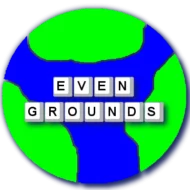Creating accessible maps for individuals with visual impairments is a complex process. When designing tactile maps, we need to carefully consider how to best integrate braille to convey information effectively without sacrificing practicality and efficiency. This post explores the challenges and solutions involved in using braille on tactile maps, drawing from our design experience.
2D vs. 3D Maps
2D maps, typically printed on paper or plastic, offer more flexibility when it comes to adding braille labels. There is often extra space available, and the printing process is faster, making it easier to incorporate braille directly onto the map.
In contrast, adding braille directly to 3D maps is more complex and costly. The 3D printing process requires creating physical space for each braille character, which increases printing time and the amount of material used.
The Role of Braille on Tactile Graphics
- It’s important to understand that while it’s not standard practice to use braille to convey full information directly on tactile graphics, it is not against the standards and guidelines to include braille. Braille is used to mark areas that users can match with a key or, when necessary, with transcriber’s notes.
Minimizing Braille on the Map
Given the practical challenges of printing braille on 3D maps, the use of braille directly on the map is often minimized. Most detailed information is provided in supplementary materials like keys and legends. This is particularly true for 3D maps, where adding braille is more costly.
The Importance of Legends and Keys
Legends list the various tactile marks used on the map, such as symbols for lakes, rivers, or borders. These can be printed separately in 3D with a thinner base than the map, and a single legend can be used for multiple maps. Keys are crucial for interpreting the map. They contain a list of written abbreviations and their equivalents. For example, if Nairobi is marked with “na” on a map, “na” will always mean Nairobi on any Kenyan map. We create keys so that a single key is designed to work with any number of maps for a particular country.
Streamlined Map Design
To make maps easier to use, one- or two-letter marks are used on the maps. One-letter marks are used when possible, and two-letter marks are used when necessary. This helps to reduce the need for extensive braille directly on the map. This is different from how it is done on 2D maps, where two letter marks are enquired.
Practicality and Efficiency
It is more practical and efficient to use separate braille keys printed on braille paper rather than adding braille directly to the 3D map. 3D printing time is increased when braille is included, whereas a braille printer can quickly produce many braille keys. Furthermore, printing braille directly on a 3D map requires additional material and time. Legends are also printed separately, because a set of legends can be used for several maps, while they can also be printed on a thinner base to save time and material.
Following Standard Practices
Using separate keys and legends is consistent with standard practices in tactile graphics, where braille is used as an identifier rather than a direct label. This is why a single letter or two letter markings are used.
The Advantages of Separate Braille Keys
Separate braille keys prevent the need to create excessively large maps to accommodate braille labels for all features. Placing braille directly on the map would require more space, which could result in a map too large for a student to use comfortably. We can provide braille transcriptions for keys, which can be printed and mailed quickly.
Conclusion
While adding braille directly to 2D maps is easier due to their production method, braille is minimized on 3D tactile maps due to considerations of practicality, cost, and adherence to standard practices. The primary method involves using one or two-letter identifiers on the map, which are then matched with a separate key and legend. This method is more efficient and more cost-effective, and it aligns with the standard practice of using braille as an identifier, rather than a direct label. However, it needs to be noted that since there aren’t any standards for creating 3D printed maps, only guidelines exist, so in practice other solutions are possible and we are able to create a different approach if needed.


No comments! Be the first commenter?